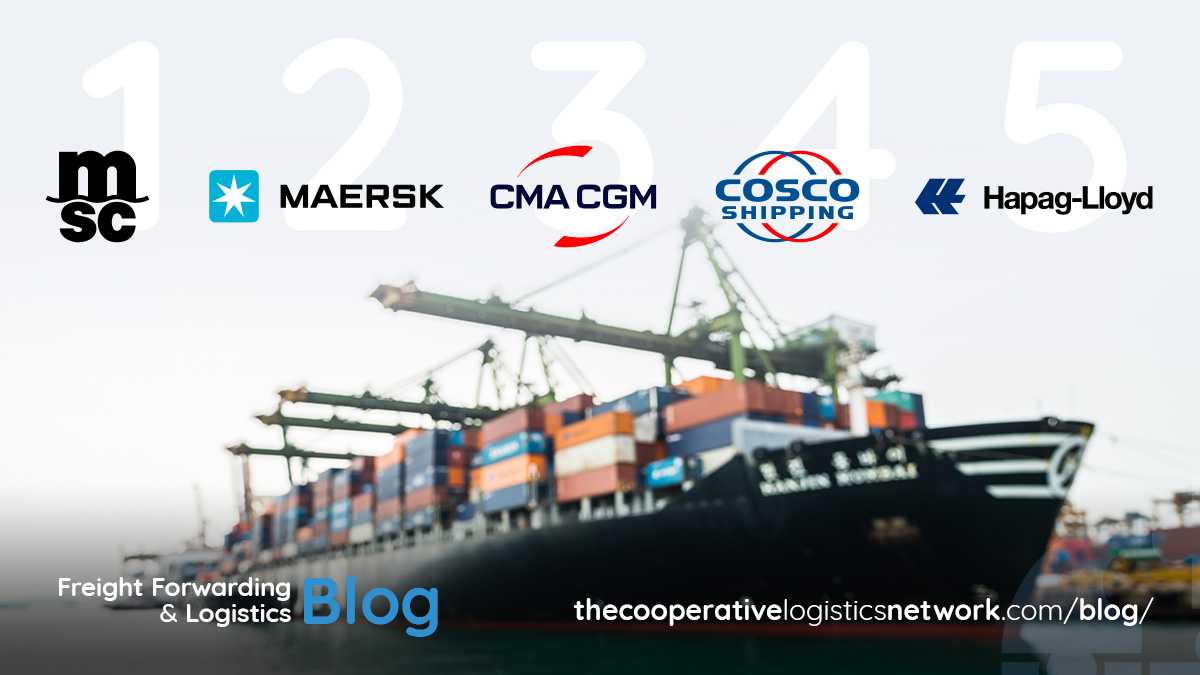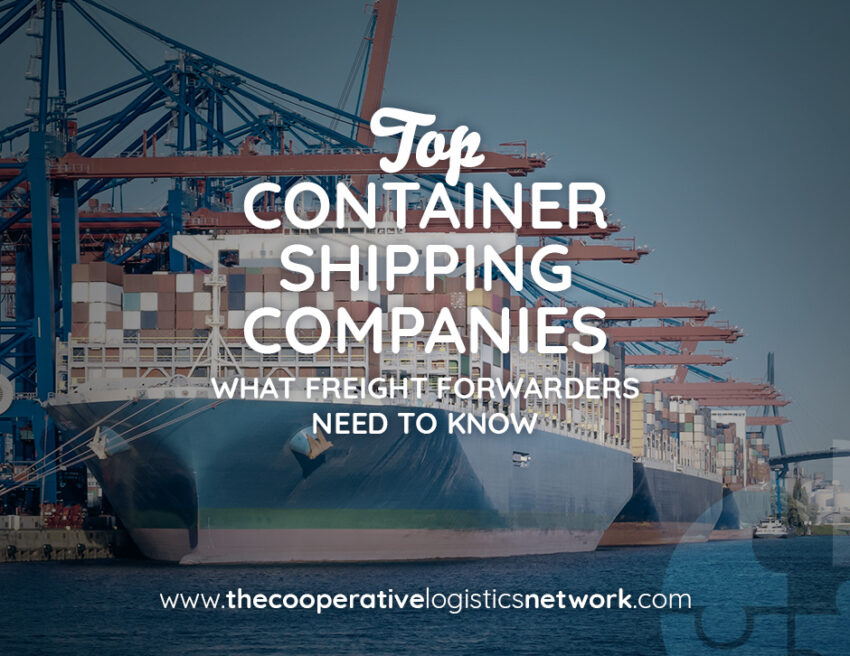The global shipping industry has seen sweeping changes in recent years, shaped by mergers, digital transformation, shifting trade lanes, and geopolitical turbulence. As we step into 2025, freight forwarders must stay informed about the top container shipping companies driving international logistics. Knowing who the market leaders are and how they operate is essential for forwarders looking to secure capacity, negotiate better rates, and ensure reliability in their supply chains.
In this blog, we break down the top container shipping companies for 2025, explore what’s changed in the industry, and share tips on how forwarders can navigate this evolving landscape.
The global shipping landscape in 2025
Container shipping forms the backbone of global trade, with around 80% of all goods transported by sea. But the container shipping world is no longer dominated by just a few names. Mergers, environmental regulations, and the rise of Asia-based carriers have reshaped the playing field. The industry has also been shaped by volatility: from the COVID-19 pandemic’s ripple effects to the Russia-Ukraine war and Middle East instability, events have strained shipping schedules and pushed forwarders to find more reliable partners. Now, with more digitalization, better visibility tools, and increasing customer demands for sustainability, shipping lines have adapted but not all at the same pace.
So who’s leading the charge in 2025?

Top container shipping companies 2025
1. Mediterranean Shipping Company (MSC)
MSC continues to hold the crown as the largest container shipping line in the world by capacity. With a fleet exceeding 760 vessels and a capacity of over 5.5 million TEUs, MSC has strategically expanded through new shipbuilding and service coverage, particularly on Asia-Europe and Transpacific routes. MSC’s independence (not being publicly traded) gives it flexibility in decision-making, and its push toward alternative fuels makes it attractive to sustainability-minded clients.
2. Maersk
Maersk remains a titan in the industry but has slightly shifted its focus from pure container operations to becoming an end-to-end logistics provider. The company now positions itself as a global integrator of container logistics, offering customs, warehousing, inland services, and more. While its container fleet is still vast (around 4.2 million TEUs), its value proposition lies increasingly in its door-to-door capabilities, a growing interest for freight forwarders seeking comprehensive solutions.
3. CMA CGM
CMA CGM, the French giant, holds a strong third place with its consistent investment in digital logistics and green shipping initiatives. In 2025, it remains one of the most freight forwarder-friendly carriers, offering flexible services and broad port coverage across Africa, Europe, and Asia. With a capacity of over 3.8 million TEUs and growing interest in AI-powered shipping, CMA CGM remains a top choice for mid-sized forwarders.
4. COSCO Shipping Lines
China’s state-owned carrier has been steadily climbing the ranks, with investments in both vessels and port infrastructure. COSCO’s integration with OOCL has further strengthened its footprint, especially in Asia-Pacific trade lanes. For freight forwarders handling intra-Asia or Asia-Europe business, COSCO remains a strategic player among the top container shipping companies in 2025.
5. Hapag-Lloyd
Germany-based Hapag-Lloyd remains a steady contender in the top 5, known for reliability, digital documentation tools, and a strong commitment to decarbonization. It recently expanded into the African market and reinforced its digital services through real-time tracking and customer portals, enhancing transparency for forwarders.
Other notable players include ONE (Ocean Network Express), Evergreen Line, and HMM, each holding sizable capacity and regional strengths. In 2025, these carriers will continue to diversify their offerings to cater to small and mid-sized freight forwarders.
How the top container shipping companies are changing the game
Digital freight platforms
Many leading carriers have launched or partnered with digital freight marketplaces, allowing freight forwarders to get instant rates, book space online, and track cargo in real time. For example, Maersk’s online platform now handles over 70% of its bookings digitally. CMA CGM and Hapag-Lloyd have followed suit with their own digital tools, streamlining the entire quote-to-invoice cycle. This digitalization is reshaping how freight forwarders interact with carriers. Instead of relying solely on local agents or long email threads, forwarders are expected to operate in a faster, more agile environment.
Sustainability and fuel costs
The drive toward decarbonization has become more than a buzzword. The International Maritime Organization (IMO) regulations and customer demand for low-emission supply chains are forcing carriers to invest in LNG vessels, methanol-powered ships, and carbon tracking tools. MSC and CMA CGM have already committed to building dual-fuel ships. For freight forwarders, this shift affects rate structures and carrier choices, especially as clients begin asking for eco-friendly options in their logistics plans.
Alliances and reliability
While shipping alliances like 2M, THE Alliance, and Ocean Alliance still exist, their influence is changing. Maersk and MSC have announced the end of their 2M alliance, reshaping many schedules. Freight forwarders must stay updated, as service reliability can change dramatically based on shifting alliances. Carriers now differentiate themselves not just by price or transit time, but by schedule reliability, space availability, and data-sharing capabilities, all vital factors for forwarders managing tight delivery windows.
What freight forwarders should consider in 2025
Being aware of the top container shipping companies in 2025 is not just about knowing who’s at the top; it’s about understanding how these companies fit into your operations. As a freight forwarder, you’re the crucial link between shippers and carriers, and your success often depends on the strength of those relationships.
In 2025, here are the key questions to consider:
-
Can your chosen carriers offer real-time visibility and fast booking tools?
-
Are you able to compare rates and services across different lines easily?
-
Do your clients prioritize sustainability and are your carrier options aligned with that?
-
Are you part of a global network that helps you access better rates or consolidated cargo?
Strengthening your position through collaboration
In an industry increasingly driven by size, technology, and scale, independent freight forwarders often face the challenge of competing with global 3PLs. Partnering with the right shipping lines is important, but so is having access to a reliable global network of agents. Being part of a trusted logistics network gives you access to inward business, shared digital tools, and consolidated volumes that improve your bargaining power with even the biggest carriers.
Whether you work with MSC, Maersk, CMA CGM, or regional carriers, having strong partners across ports and countries helps you offer a true end-to-end solution—one that matches the scale and professionalism of the top container lines.
Final thoughts
The top container shipping companies 2025 are trendsetters in digital transformation, green shipping, and logistics innovation. For freight forwarders, understanding their services, strengths, and shifts is key to staying competitive in a volatile market.
But navigating this space doesn’t have to be a solo journey. With the right partners, platforms, and preparation, independent forwarders can thrive alongside the industry’s biggest names and even outperform them in flexibility, customer service, and niche expertise.
As 2025 unfolds, the question isn’t just which carriers to use but how well you’re positioned to adapt, collaborate, and grow in a fast-changing global shipping landscape.


